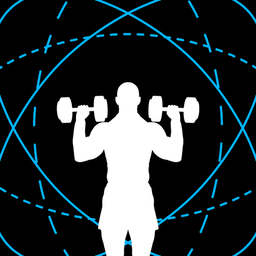What Are the Benefits of Green Powders (If Any)?
Do the supposed benefits of green powders stand up against the scrutiny of research? Find out if they are truly worth your money in this article.

OK, so. I have a guilty pleasure: watching vlogs.
Y’know, “influencers” or even random people documenting their daily lives — some might use the word “vapid” to describe the content (my brother does 🥹), but I don’t know. There’s just something about seeing someone live their life.
*ahem* Right. There’s a point to this article. And it’s this: recently, I’ve started noticing the same formulaic introductions in, like, 95% of the vlogs. It goes a little like this:
“Good morning! I’m starting my day off with [INSERT GREEN POWDERS BRAND]. Since I did, I’ve just felt so energized, and my bloating issues have gotten soOOoo much better!”
I mean. I wouldn’t call myself easily influenced, but my curiosity was piqued by the 10th video (yes, I know, I might be watching way too many vlogs). Which explains this article.
What are green powders?
Before diving into the most important question weighing on our minds (i.e., are the supposed benefits of green powders supported by research?), let’s first cover what green powders are.
Green powders are a blend of dehydrated fruits, vegetables, herbs, and sometimes pre-and probiotics, alongside other nutrients.
Depending on the brand and company, green powders can contain anywhere from 25 to 40 different ingredients — spirulina, apple, beet, broccoli, carrot, spinach, pineapple, and rose hips.
They are generally designed to be mixed with water or another liquid.
The main selling point of green powders? They’re meant to help people easily reach their recommended daily vegetable and fruit intake in just 1 serving.
FYI, according to the CDC, only about 11% of American adults eat the recommended amount of fruits and vegetables … so if green powders truly count toward a person’s daily vegetable and fruit intake, they’ll be very helpful.
Learn how many fruits and vegetables you need to eat a day here:

But do they actually? Spoiler alert: they don’t. More below.
A skeptical look at the benefits of green powders 🧐
Let’s bust through the supposed benefits of green powders, one at a time:
Green powders are not a replacement for the intake of fruits and vegetables because, during processing, important nutritional content like fiber and certain micronutrients are lost.
Many green powders contain digestive enzymes. Athletic Greens’ formulation, for example, includes bromelain, a plant-based digestive enzyme from pineapple that breaks down protein.
But here’s the thing:
1️⃣ Unlike pharmaceutical or prescriptive-grade digestive enzymes, you can never be sure that supplemental ones 1) contain an efficacious dose, 2) can survive the stomach’s harsh acidic environment, and 3) will help with your specific digestive distress (what if your trouble is with carbohydrates, instead of protein?).
2️⃣ Besides, if you’re healthy, your body should produce sufficient digestive enzyme levels to break down foods (even if it’s a heavy meal).
One of the best ways to support your gut health is by eating a varied diet of high-fiber foods (reminder: green powders contain very little fiber) — from legumes and whole grains to vegetables and nuts.
Downsides of green powders
OK, so there’s that for the benefits of green powders.
But what about seeing them as a nice little treat in the morning? Welllll. Here’s what you need to know:
- They are very expensive for what they are: A single serving of Athletic Greens powder costs $2.63, and it doesn’t even count toward your vegetable and fruit intake 🥴. For a top-up of $0.36, you could get 1.36 kg (3 lb.) of fresh mandarins from Aldi. IDK about you, but the choice seems clear here.
- You can overdo it on certain nutrients: For example, excess amounts of niacin (vitamin B3) may cause skin flushing and dizziness.
- Risk of toxicity: In 2016, Consumer Labs found trace amounts of lead and arsenic in several green powders. Note that studies show even low-level exposure to contaminant metals contributes to the development of cardiovascular disease, especially heart attacks and strokes.
- Potential interference with medications: Common “superfoods” found in green powders, including chlorella and spirulina, provide high vitamin K levels, which help blood clot. This can be dangerous for those taking blood-thinning medications.
Are green powders a waste of money?
Given everything we’ve discussed, the answer seems clear: yes.
But let’s not jump to conclusions.
There are some instances in which green powders make sense. Case in point: if you’re traveling and do not have access to fresh fruits and vegetables, green powders will be your next best alternative.
Now, if you are interested in trying out green powders, here are a few tips:
How else can you support your health?
You know what has a larger body of evidence supporting its health benefits, from mental clarity to gut health? Actual fruits and vegetables, yes (oOOOooh, burn!)
But also exercise. Cardio and strength training.
If you’d like to start or refresh your training program, check out GymStreak, which offers a tailored, done-for-you fitness routine that is ready in seconds.
Get a sneak peek of the app here:
References
AG1® | What Is AG1. https://drinkag1.com/what-is-ag1. Accessed 17 Aug. 2024.
Can Bright Green “super Powders” Really Make You Healthy? 3 Mar. 2024. www.bbc.com, https://www.bbc.com/news/health-68412650.
“ConsumerLab Finds Lead, Cadmium and Arsenic Contamination in Greens and Whole Foods Supplements.” ConsumerLab.Com, https://www.consumerlab.com/news/greens-contamination/08-08-2016/. Accessed 17 Aug. 2024.
Fresh Mandarins | ALDI US. https://www.aldi.us/products/fresh-produce/fresh-fruit/detail/ps/p/mandarins/. Accessed 17 Aug. 2024.
Lamas, Gervasio A., et al. “Contaminant Metals as Cardiovascular Risk Factors: A Scientific Statement From the American Heart Association.” Journal of the American Heart Association: Cardiovascular and Cerebrovascular Disease, vol. 12, no. 13, June 2023, p. e029852. PubMed Central, https://doi.org/10.1161/JAHA.123.029852.
Lee, Seung Hee. “Adults Meeting Fruit and Vegetable Intake Recommendations — United States, 2019.” MMWR. Morbidity and Mortality Weekly Report, vol. 71, 2022. www.cdc.gov, https://doi.org/10.15585/mmwr.mm7101a1.
Peechakara, Basil V., and Mohit Gupta. “Vitamin B3.” StatPearls, StatPearls Publishing, 2024. PubMed, http://www.ncbi.nlm.nih.gov/books/NBK526107/.
Vermeer, Cees. “Vitamin K: The Effect on Health beyond Coagulation – an Overview.” Food & Nutrition Research, vol. 56, Apr. 2012, p. 10.3402/fnr.v56i0.5329. PubMed Central, https://doi.org/10.3402/fnr.v56i0.5329.


